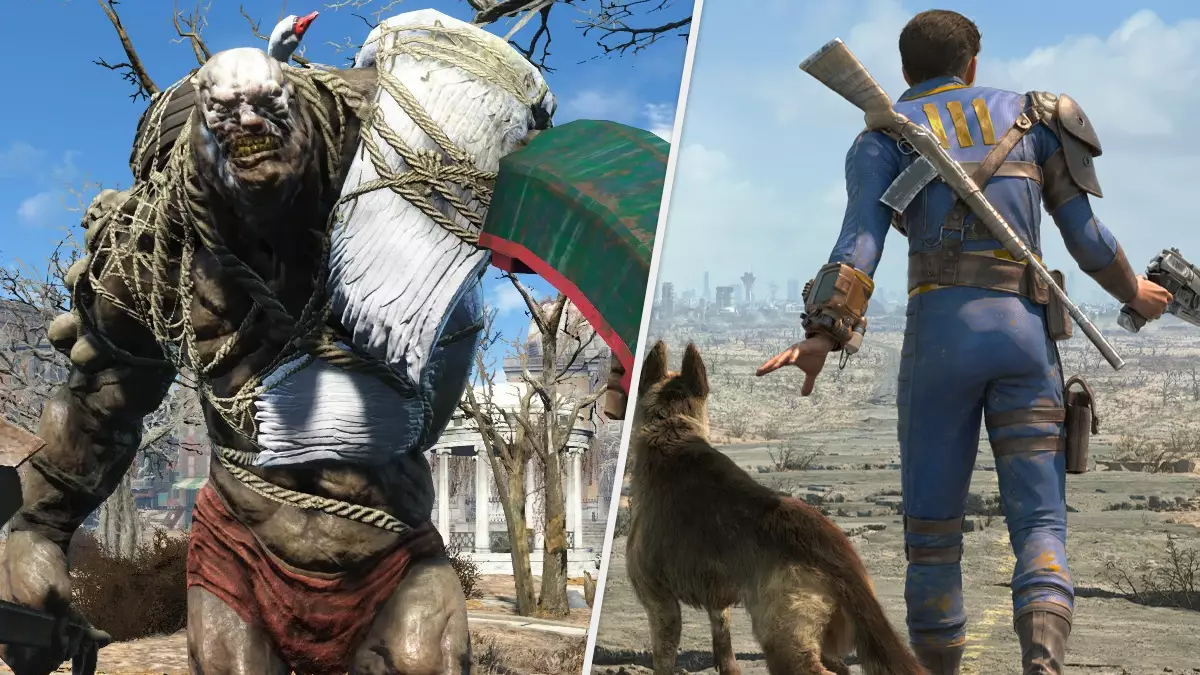
Super mutants are some of the most lethal enemies that one could encounter in the wastelands of the Fallout games. The virus that transforms human beings into these monsters was purposefully created by a pre-War corporation, and a scientific study has discovered whether this could be possible in real life.
The flora and fauna of the Fallout games are... some gnarly creatures. The brahmin are cows that have two heads as a result of mutation through irradiation, and they are used all over the post-War United States for milk, meat, leather and to carry goods over long distances. They don't really pose much of a threat, though they are a little strange. However, insects like the fly and the mosquito have benefitted hugely from the devastation, evolving into ginormous territorial bloatflies and bloodbugs. A swatter simply won't cut it here anymore. The Yao Guai are what remains of the American black bear, yet their descendants are hulking beasts and hostile to anyone who crosses their path. And, this isn't even getting into the centaurs, who were produced by mixing humans and animals in vats of the man-made Forced Evolutionary Virus. Those are nightmares in their purest form.
Following Bethesda's acquisition by Microsoft, it's very likely that future Bethesda titles will be on Xbox Game Pass from launch and then arrive on other platforms later. Check out what general manager of Microsoft Studios marketing group Aaron Greenberg had to say about the subscription service here.
Advert
The Forced Evolutionary Virus was also given to humans to create super mutants, who become immune to radiation and extremely durable to any form of injury. Behemoths occur when the super mutant's DNA destabilises and causes their psychology to depreciate into a monster with an intense instinct to protect what's theirs. In an article which is part of the Journal of Interdisciplinary Science Topics at the University of Leicester, UK, Conor Appleton wanted to know whether the science of these creatures checked out. "This paper investigates the viability of such a creature existing, using dimensional analysis to determine what would happen if an ordinary super mutant were scaled up to the size of a behemoth," explains the abstract. "First the relative strength of the behemoth was estimated, then the effects of gravity on such a creature were discussed."
As per texts from the games, Appleton assumes that a super mutant has a strength that is similar to that of a gorilla. A male gorilla is able to lift approximately 816 kilograms, so a super mutant is likely to be able to lift two times its own mass, given this rule. However, the strength to mass ratio of a behemoth is calculated differently due to the difference in size between a super mutant and a behemoth. A behemoth is nearly four times larger than its predecessor, but, its strength will instead scale with the cross-sectional area of its bones and muscle fibres which is only a two dimensional increase.
A behemoth's strength is therefore 12.1 tonnes. Dividing that figure by the mass of a behemoth, which is worked out to be 20.7 tonnes, gives a strength to mass ratio of 0.585. The strength to mass ratio of a super mutant is 2.25. In fact, a behemoth would be physically weaker than a super mutant, but try telling that to anyone playing a Fallout game on its hardest difficulty setting. Appleton also points out that gravity would have a serious effect on the creature's physiology. "The weaker supporting parts of its biology would be at particular risk, such as the cartilage in the knees. It is unlikely that it would be able to run fast as it does in-game, as this would put immense pressure on its unequipped skeleton," continued the researcher. "It is also likely that it may have other issues, such as spinal problems. All in all, it would find it very hard to survive."
Advert
Now I'm sad about those poor behemoths and their dodgy knees. Perhaps these inconsistencies could be addressed in the rumoured sequel to Fallout: New Vegas, which is allegedly in the works with Obsidian Entertainment.
Featured Image Credit: Bethesda